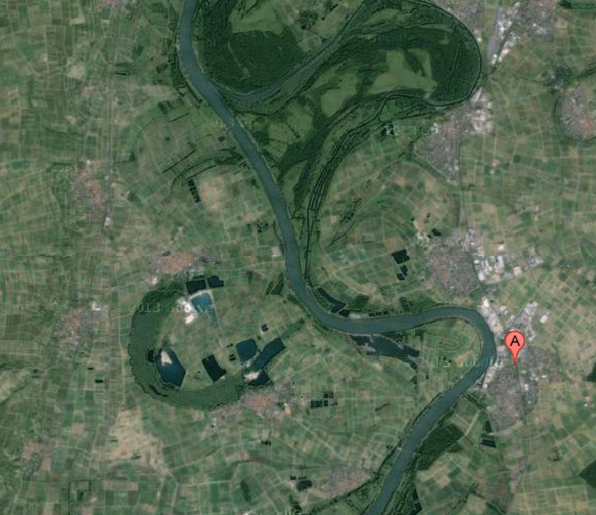Yangshuo
Several karst green hills dot all banks of the Li River an aspect, which implies that they are a result of limestone deposits in Yangshuo, which is a county of china. The hills are karst and attractive as they appear elevated and strong and have greenish grey color. Among the most notable karst hills is the elephant hill that looks like a giant elephant. The karst hills are very spectacular and are only present in a few parts of the world. Thus, the hills form a central type of vegetation in a region that has a gently rolling terrain.
The evident river formation is the deposition of silt or siltation of the river bank as the river meanders across the rugged terrain. From the map, it is evident that the river flows from the higher part of the region towards the lower parts of the lowlands while making a series of depositions along its banks.
Also, the topography of the region makes the river meander as it flows southwards. The terrain also facilitates easy flow of water and little deposits that may result in accumulation of silt or water in the lowlands. The permanent nature of the river implies that the river flows throughout the year.
Yangshuo region has weather conditions that comprise of four seasons, which are winter, spring, summer, and autumn. The seasons determine the prevailing weather conditions and vegetation cover found in the region that includes the green karst hills found along Li River. The rainy seasons cause flooding of the banks and consequent erosion and deposition of silts. In contrast, the dry seasons cause water levels to recede and create siltation on the banks of the river. Hence, the change in weather patterns makes siltation occur.
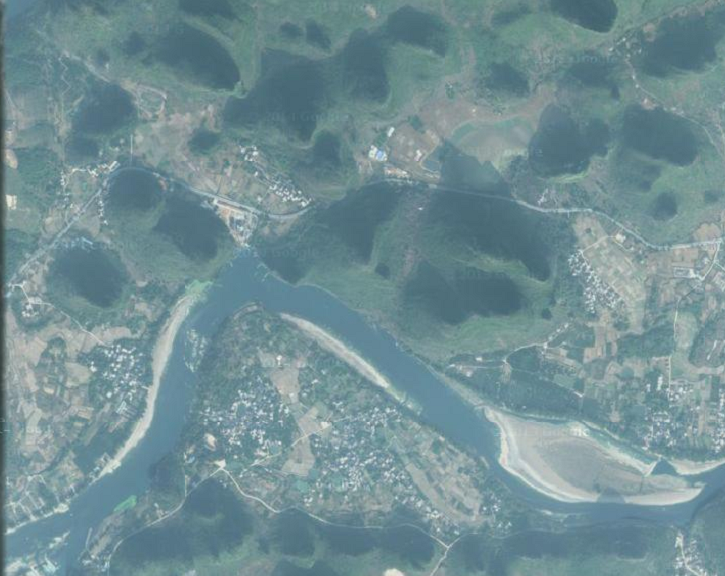
Mississippi River
As opposed to Li River, Mississippi River is composed of several meanders and turns that are present in various parts of the waterway. Furthermore, the topography of the area where the Mississippi River flows through is gently rolling, and thus, it leads to the development of meanders.
Another difference evident from Li River and Mississippi River is the fact that, while Li River flows from higher ground to lowlands and has few meanders. On the other hand, the Mississippi River flows through a gently rolling plain characterized by several meanders.
Due to the topography of the Mississippi River, there is a higher possibility of deposition and formation of oxbow lakes as opposed to Li River that has linear and gently rolling topography. Also, since Mississippi River has a meandering shape, it is vulnerable to deposition of silt and a consequent formation of oxbow lakes.
An example of an oxbow lake in River Mississippi is the Eagle Lake. The erosion and deposition processes of the river and human activities have contributed to the occurrence of a series of oxbow lakes along the river. Moreover, the federal government of the United States developed cutoffs and lakes along the river to ease navigation.
Other formations in the region include the green vegetation that covers the banks of the river. These formations have led to the development of several meanders along the waterway and the resultant development of oxbow lakes. The topography of the region, where the river flows, characterizes meanders and oxbow lakes, and hence, initiates a significant rise in water levels. A combination of topography and human activities has led to frequent floods that cause extensive destruction in areas along the riverbanks.
From the meanders and several oxbow lakes formed along the river, it is clear that the region has a gently rolling plain. The green vegetation that is evident in large part of the area where the river flows create a picture that the region occupies an undulating terrain. The white patches on the map comprise of human activities that have led to pollution in the river. Therefore, the initial vegetation cover along the river is no longer present as the level of human activities destroyed the vegetation.
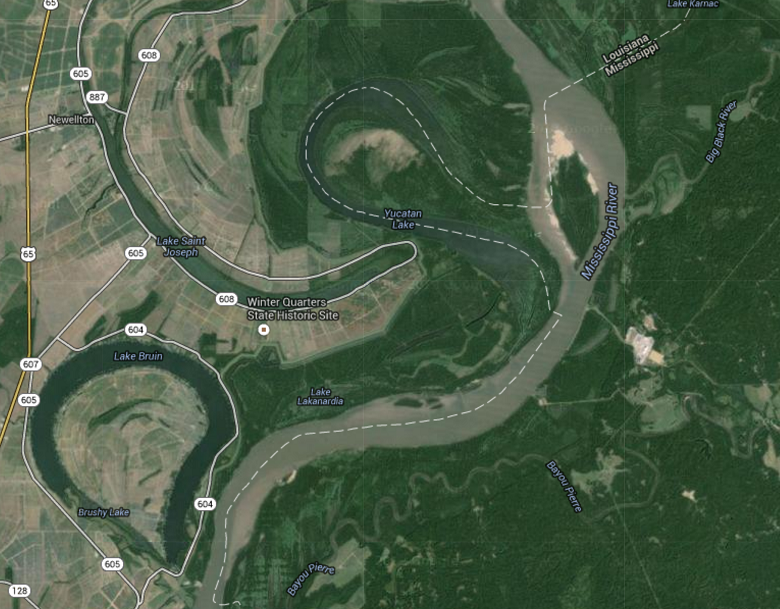
Goosenecks of the San Juan
The major type of river course in San Juan River is a composition of several tight turns, which take the shape of goosenecks. The river meanders around a rocky and hilly environment before encountering the waterfall. A massive waterfall that is approximately hundreds of feet down characterizes the river. Due to the rocky cover of the region, the river has developed several meanders along its course. The river covers a span of about 6 miles characterized by twists and deep-rooted meanders.
The goose necked turns and twists in the river occasion because of the siltstones, shale beds, limestones, and sandstones that have created a precarious cliff. The cliff has sharp edges and sloping topography characterized by stony and sparse vegetation. Due to the stony surface, the river has to find its way around the stones. Notably, the stones make up the cliff surface that has a gentle setting. The tight turns sometimes are about 180 degrees, and thus, make a river that covers a distance of about 6 miles to cover an area of fewer than 1.5 miles.
The period associated with the formation of San Juan River dates back to a historic era millions of years ago when the river first set its course. Over time the river defined its way in the middle of the sandstones, limestones, and siltstones that characterize the gentle surface of the riverbed. As a result, the river slowly cut down its bed, causing a deep ridge into the ground. The meanders that are goose necked developed as the river created its way in the middle of the sedimentary rocks on its bed.
The river shows a certain kind of relationship with the Mississippi river found in the North American continent. The meanders that are present in the two rivers create a form of relationship between the Mississippi River and San Juan River.
The rivers also display a similarity since their banks portray similar terrains. Meanders in goose necked turns in San Juan River result from nature and the present rocks in the area, whereas the oxbow lakes and cutoffs in Mississippi River are a result of the topography and erosion and deposition processes of the river system.
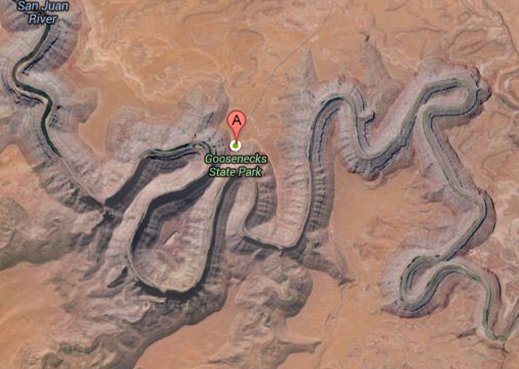
Niagara Falls of New York
The escapement has numerous waterfalls commence at the top of the escarpment and raced towards the southeastern direction. Due to the topography and the terrain in the escarpment, several rivers at the top of the cliff usually flow down the escarpment. One of the dominant waterfalls in the escarpment is the Niagara waterfall that takes after the name of the escarpment. Niagra falls recede to the lower parts of the escarpment after losing the momentum gained from the higher parts of the cliff.
The mammoth nature of Niagra falls because of Niagra escarpment, which develops a cliff that cuts across southern Ontario. The sharp nature of the cliff is associated with the speed at which the water flows from the top of the mountain. Also, the length of the escarpment also increases the magnitude of the waterfall that develops at various points of the escarpment. The gorge created by the escarpment increases the mammoth nature of the fall in the Niagra region.
Some of the factors that lead to the waterfall in the part of the escarpment include the fault lines, unequal erosion, weathering, and sharp breaks. These factors increase the amount and the magnitude of waterfalls in the escarpment. Mass wasting, erosion, and weathering create drill holes and sharp breaks in the escarpment.
Therefore, rivers such as Niagra that flow from the top of the escarpment develop falls when they reach these sharp breaks and drill holes. As a result, the escarpment experiences several waterfalls than various parts of the world.
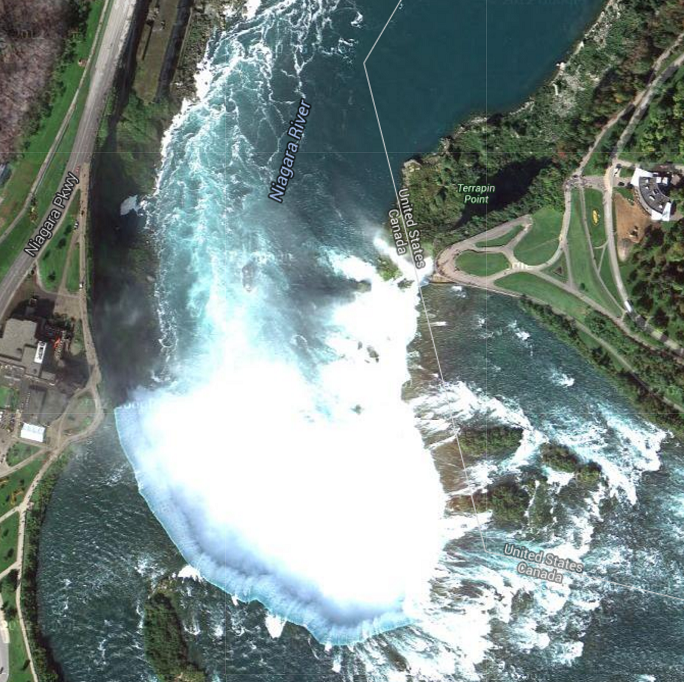
Gernsheim Germany
At this point of the Rhine River, the river has a meander, which is unique and pronounced when compared to other views of previous rivers. At the point preceding this river is linear, and thus the meander is at the point where other meanders exist and have formed oxbow lakes.
Additionally, the meander develops on the lower parts of the river breaking from the initial linear structure, which depicts changes in terrain. As a result, this point of the river has a pronounced meander as opposed to other points of the river and previous views of the rivers. The meander is unique because it forms a loop, which rapidly changes the direction of a river at Gernsheim.
The edges of the river are smooth and thus suggest that the river has deep undercut. Moreover, the edges of the river at this point of the river composed of green vegetation that is clear in the upper parts of the river.
Downwards the vegetation that edges the banks of the Rhine River become scarce and in some parts of the river, white patches are visible an implication that human activities are prevalent in the region. The vegetation cover creates a kind of distinction both at the upper and lower parts of the river. The meander at the section of the river adjacent to Gernsheim town breaks the peaceful and tranquil stretch of the river.
The evident river relict that is at Gernsheim is that of the oxbow lake formation. Downstream of the Rhine River are two pronounced oxbow lakes, which have formed on both sides of the river. The relict present here is the land that separates river and the oxbow lake. Moreover, since the edges of the river seem smooth, it appears that the river undercut its bed and thus creates additional land on its edges, which have encouraged human settlement to occur as in the case of Gernsheim town.
Since the meander of the river is pronounced, it is predictable that the river might not move in the future because of the possible formation of an oxbow lake. The meander has the potential of forming an oxbow lake because it promotes deposition of silt on the convex bank while causing erosion on the concave bank. Eventually, cumulative erosion of the concave bank and deposition on the convex bank would cause the river to cut off from the meander and forms oxbow lake.
